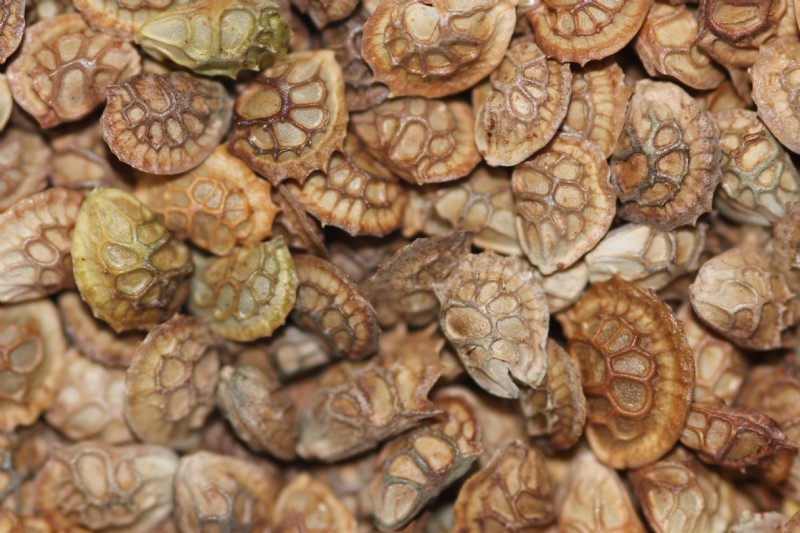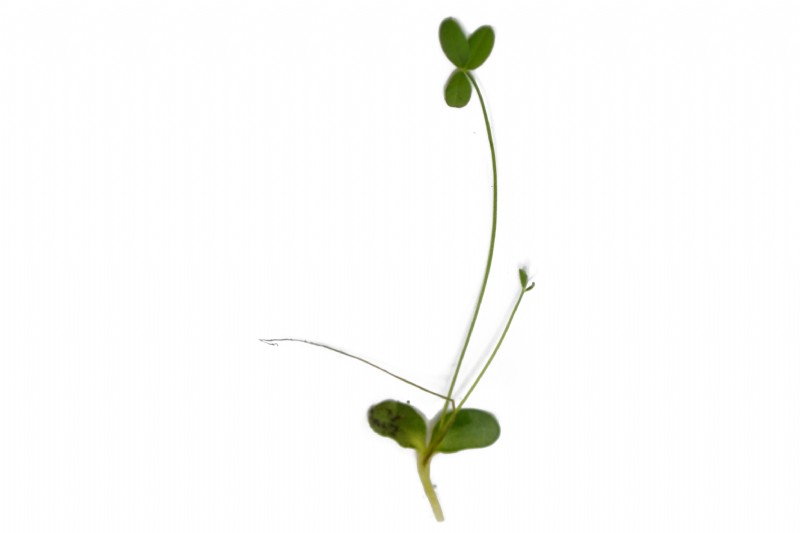Sainfoin
Sainfoin is extremely palatable to livestock and has very good nutritional balance. It can be grazed or fed as hay or silage. It suits the thin soils and limestone rich downlands found in some areas of the UK. Loosely translated sainfoin in French means 'Healthy Hay'.
Uses
Generally used as a hay or silage, occasionally grazed in the autumn. When cutting for hay, the ideal time to cut is 50% flowering, excessive turning for hay making will result in leaf shatter.
Persistence
Sainfoin has the potential to persist for 3-5 years, or longer in well managed swards provided its tap roots are not damaged. It is best to avoid heavy grazing and poaching which can reduce the population of viable tap roots.
Strengths
Sainfoin is a high-yielding, drought-resistant plant which needs no nitrogen fertiliser and little phosphate. It won’t cause bloat, is a natural anthelmintic and, with rumen protected protein, produces top quality meat and milk. Sainfoin has deep penetrating roots making it highly suitable for the dry, alkaline soils. Sainfoin has many positive characteristics as a forage. In ruminants, these are the result of its content of high levels of chemicals called condensed tannins. These bond to the protein in the rumen and allow it to pass into the abomasum where it is digested. Daily live weight gains for cattle and lambs are high on grazed sainfoin. Being a legume, there is a high level of residual fertility after a sainfoin ley has been ploughed, so its very good for repairing worn out 'tired' arable land.
Frost Tolerance
Sainfoin is extremely tolerant to frosts.
Yield
15t DM/ha once it has established.
Sowing Rate Advice
35kg per acre / 87.5kg per ha.
Sainfoin seed is large, so a pure stand sowing rate is high to get the correct plant density. It should be drilled to a depth of 2cm. And rolled well.
Mixture Sowing Rate Advice
5 kg per acre / 12.5kg per ha.
The large seeded sainfoin should be included in mixtures at a robust rate, to see plenty of plants in the sward, to gain maximum benefits from this species.
Ideal Sowing Time
Sainfoin is traditionally sown as a spring crop, so ideal sowing time is late April - May, in warm soils. Adequate moisture is essential for good establishment so sowing later in the summer may be less reliable. Similarly the cut off for sowing sainfoin is the last 2 weeks of august, to give this slowly growing crop, time to establish before colder late autumn soil temperatures.
Management
Sainfoin may generally need topping several times in the establishment year, if annual weeds are an issue. Although this may vary considerably with season and soil type. Sainfoin can be slow to get going in the year of sowing but produces enough ground cover to compete against weeds once it has established, the full yield will come from the second year of growth. Regrowth from cutting may be lightly grazed in the late autumn, once the plant growth is slowing down, however ensure not to graze too hard, as it may deplete the plant reserves, which it relies upon to over winter.
Distinguishing characteristics
Seed
Sainfoin is a distinctive seed, it stands out because of the seeds large, papery husk. The husk is light brown, with a serrated keel and uneven surface. It is 5-6mm in length. The Sainfoin seed itself is a smooth, kidney shape. It varies from a pale brown to dull black colour. It is 4mm in length.
Seedling
The sainfoin seedling produces a pair of cotyledons with no petioles. They are larger than some clover cotyledons and elliptical to round in shape. The first true leaf is produced on a long stalk and is oval in shape.
Flowering Plant
This is an upright plant, which is a pale to dark green colour, with sparse hairs on the stem.
It grows from basal base or crown.
The leaves are recognisable as pinnate, with 5 to 15 pairs of opposite, elliptical shaped leaflets, and a terminal leaflet.
The stipules found at the base of the leaf are pointed and turn reddish brown and papery as they age.
The distinctive conical shaped flowers are a pinkish, crimson colour, on a graceful curving stalk.
A well developed root system, penetrating deeply into the soil.
Additional Info
Average seeds per kg - 50,000. Average protein content 18% (although the tanins in the plant mean the protein is utilised more efficently by livestock). This legume does not need artificial fertiliser, however phosphate & potash should be addressed if low, as the crops will respond favourably to these inputs.
Works well with
Often sown as a pure stand, however it can be sown with a companion species of non aggressive grasses, such as meadow fescue and Timothy. They bulk out hay crops and help compete against weeds.You can find Sainfoin in the following mixtures
- Sainfoin Four Year Cutting and Grazing 70% ORGANIC
- Worming Paddock Mixture
- Final Trimester High Nutrient Boost - Strip Grazing
- Herbal Over-Seeding Mixture (CSAM3/SAM3)
- Herbal Over-Seeding Mixture 70% Organic
- 'HERBAL' Grazing Ley - Four Year Drought Resistant Ley
- ‘HERBAL’ Grazing Four Year Ley 70% ORGANIC
- Operation Pollinator Mix (AHL1/CAHL1/AB1)
- Light Land Operation Pollinator Just Legumes 70% ORGANIC
- Pollen & Nectar Mix Grass & Legume Margin
- Pollen & Nectar Flower Mix Grass & Legume Margin 70% ORGANIC
- Orchard Clover Understory Mixture
- Light Land Legume & Herb Rich Sward (GS4/SAM3/CSAM3)
- Light Land Legume & Herb Rich Sward (OP4/SAM3) 70% Organic
- Broodmare Grazing
- Broodmare Grazing 70% ORGANIC
- Final Trimester High Nutrient Boost 70% ORGANIC
- Weanling & Youngstock Grazing
- Weanling & Youngstock Grazing 70% ORGANIC
History
Sainfoin was largely grown in England during the 17th -19th centuries and, to a lesser extent, in the early 20th century. It was used as a source of very high quality hay, much of which was fed to the heavy working horses of the time. The aftermath grazing was very highly favoured for fattening lambs. 100 years ago on the top of the Cotswolds, 1 in 7 fields were put down to sainfoin, and in some tenancy documents it was instructed to be grown regularly as a soil improving break crop.








